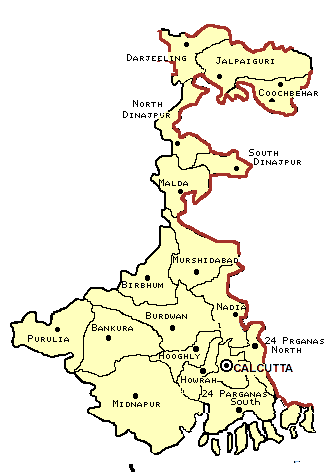Snakes don''t scare residents in seven villages of West Bengal
 Burdwan (West Bengal), Sep. 18 : Believe it or not, seven villages in Bhatar Block of Burdwan District in West Bengal have lived with dreaded snakes for over five centuries.
Burdwan (West Bengal), Sep. 18 : Believe it or not, seven villages in Bhatar Block of Burdwan District in West Bengal have lived with dreaded snakes for over five centuries.
Be it fields, roads, kitchens or cowsheds, next to the ponds one can find the hissing creepers in the entire neighbourhood of these villages namely Posla, Choto Posla, Palsana, Bodo Mosaru, Palsanatola, Mosaru and Poslahat.
Villagers have even dedicated a temple to the snake Goddess and named it Jhankeshwari Temple.
"The Jhankeshwari here is not exactly Manasa (human being), it''s a different category. It is highly venomous but it harms no humans. It is everywhere, in the house, outside, but doesn''t bite. It bites only if someone accidentally steps on it or disturbs it. However, a dip in the pond and a day''s fast is all that''s required to get cured of snakebite in case one is bitten… Of course, it rarely bites and then too it doesn''t cause any harm," said Shyamal Chakraborty, the priest of the Jhankeshwari Temple in Mosaru Village.
Residents of all the seven villages also claim that the snakes rarely bite them.
According to the villagers, the expert zoologists found the snakes to be poisonous and yet none of the snakebite victims ever died!
"Experts from Zoological Survey of India had come to investigate the snake phenomenon here. They found that the snakes were poisonous enough but could not offer an explanation on why the snakebites here are ineffective. We consider this as divine grace," said Madhusudan Konar, a resident of Mosaru Village.
Villagers say that anyone bitten by the reptiles here could be cured through a simple dip in the village pond adjoining the Jhankeshwari Temple and observing fast for a day. The bite wound would heal with no after effects.
"They come out everywhere, in our kitchens, in our bedrooms everywhere. We can see them everywhere. Even if they bite us, the poison is ineffective. We take bath in the local pond and the bite gets cured. Sometimes the temple priest waves a broom over the victim and that does it. We don''t have to rush to any doctor," said Suchitra Devi, another resident, Mosaru.
The variety of snakes found in the region vary from cobra to krait and all these reptiles roam around in the open least worried about people passing by.
As for snakes, it is said that a snake needs food just once in a couple of months and cobras are reported to have lived without any food to the extent of six months.
Faith plays a big role among the villagers. The villagers claim that the local temple has its genesis in the legend of Behula and Lokhindar. Behula, through worship, caused snake goddess Mansa to lose her venom after the latter bit her husband Lokhindar. And
Behula returned Mansa''s venom, only after Lokhindar was given back his life by the Goddess.
Villagers also tell that the Goddess promised Behula absolving the residents of the seven villages of all effects of snake venom. ince then, the snake goddess is worshipped as Jhankeshwari in the region. The name has been derived from Jhanak or the jingle from Behula''s bangles. (ANI)